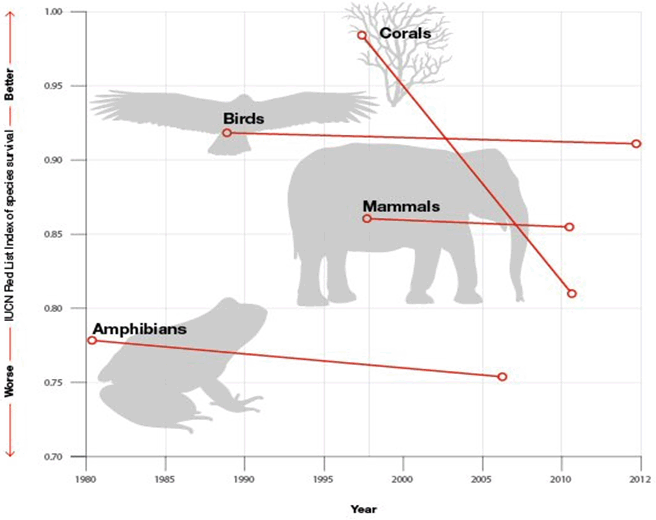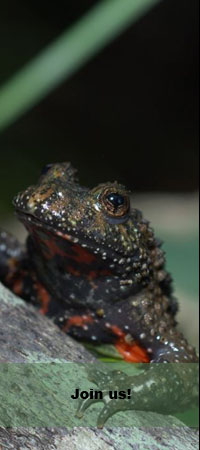Endangered Species International highest standard for transparency and efficiency
We just reached the GuideStar Platinum Nonprofit Profile level -- we're committed to the highest level of transparency and efficiency! This is the highest Level of recognition offered by GuideStar.
Amphibians and corals are declining rapidly worldwide
Numbers of Critically Endangered and Vulnerable amphibian and coral species have increased worldwide since the last two decades (Figure 1). ESI works tireless to help and support endangered amphibian and coral species. For example, we work right on the ground to stop the devastating decline of many corals in the Coral Triangle (Southeast Asia). Many of our coral sites in the Coral Triangle show resilience and recovery due to our effective and adequate protection.

Figure 1. Coral species are moving towards increased extinction risk most rapidly, while amphibians are, on average, the most threatened group. Copyrights IUCN.
Primate trafficking on the increase
The number of great apes trafficked internationally every year is at least 3,000 lives lost from the wild, which is close to one percent of the great ape global population. Combined with local poaching of primates and rampant habitat loss (mostly tropical forest), many species are in grave danger of extinction. Illegal wildlife trade still has a relatively low priority compared to other transnational crimes such as drug smuggling, human trafficking or counterfeit products. Wildlife crime is worth USD 8-10 billion annually. Trafficked young primates (e.g., orangutan) are put as pets or as attractions in commercial wildlife facilities (such as disreputable zoos, safari parks, circuses, hotels and use as photo-props). Endangered Species International stands firm in fighting the rights for every primate to live freely in their habitats. We work on many fronts and have already released back to the wild many primates and secured the creation of protected habitats.
The Indochinese leopard heading towards extinction
In Asia, leopard range has declined by about 85 percent, with the greatest loss in Southeast Asia. The available habitat for Southeast Asian subspecies of leopards has declined to critically low levels. Most leopard populations in this region now occur in small, isolated subpopulations. In Cambodia, the Indochinese leopard is believed to be extinct.
Good news for ESI coral reef conservation work
Since January 2016, ESI has recovered and grown 38 species of declining corals in the Coral Triangle. The corals were rescued and transplanted within our coral reef conservation sites. Corals are growing well and underwater landscape is changing rapidly with the appearance of my organisms including fishes. “It should be a good year for corals as water temperatures have dropped significantly from last year due to the end of El Nino and our strong conservation presence.” report Tim Escot, ESI Biologist.
Good news for ESI gorilla conservation program in Congo
Early this year, ESI captured new images of endangered gorillas and chimpanzees using cameras equipped with infrared triggers, called camera traps. Camera traps were installed within our vast project site located in the tropical forest of Congo where we actively protect many endangered animals. Photos will be displayed soon on our website. This is a strong statement that our conservation activities are working!
More funding needed for defending nature
Currently, less than three percent of all philanthropic giving goes to defending nature, endangered species, forests, and oceans. That’s a mere support considering the large scale of biodiversity loss around the globe. Ninety eight percent (98) percent of ESI spending goes to the ground for real and effective impacts to protect endangered species and habitats. Join us now to be a greater voice for Nature and to expend our unparalleled success for endangered species.

|









